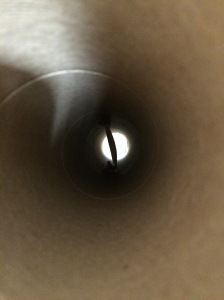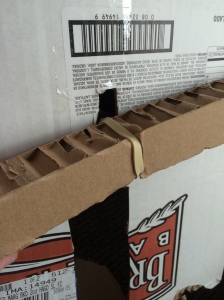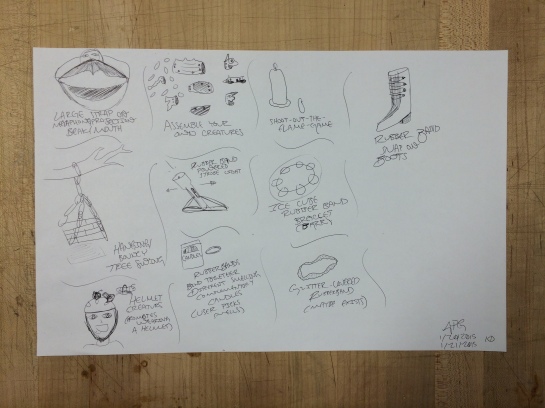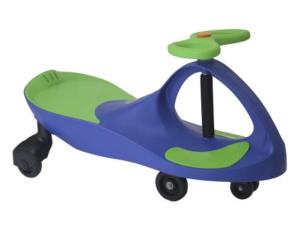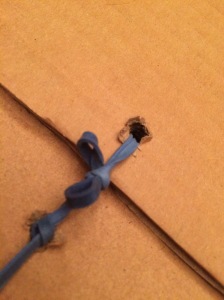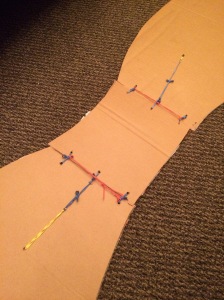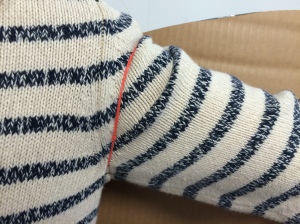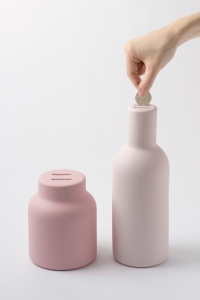Based on one of my concept sketch, I created a model for a life-size wind-up car. To create the piece, I used recycled cardboard I found around my house and in a nearby dumpster and rubber bands. Other than the existing tape on my car-body box, I did not use any other materials (I did not apply any additional adhesives and probably could have removed the tape from the body of the car without affecting its performance).
Using a found circular form a stencil, I cut out three wheels, two for the back, one for the front. I then began assembling the vehicle, cutting holes and devising attachment methods as I crafted.
After a little trial-and-error, I completed the model. Although the design was not as attractive as I hoped, that was not the intent of the model. I was thrilled to find that the model worked (when pulled backwards the rubber band wraps around the axle and, when released, the vehicle propels forwards). I realized the vehicle is not quite as big as I think it should be nor is the cardboard able to bear the desired weight (an adult human) but, nonetheless, the model gives me hope!





